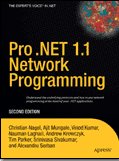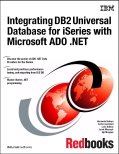Here are some technical terms mostly related to web or web service.
BPEL
Business Process Execution Language (or BPEL, pronounced 'bipple', or 'bee-pell'), is a business process modeling language that is executable. BPEL is an Orchestration language.
Origins of BPEL can be traced to WSFL and XLANG. It is serialized in XML and aims to enable programming in the large.
WSFL
Web Services Flow Language (WSFL) is an XML language proposed by IBM to describe the composition of Web services. WSFL has been superseded by BPEL.
XLang
XLang is an extension of the WSDL such that "an XLANG service description is a WSDL service description with an extension element that describes the behavior of the service as a part of a business process"
POX
Plain Old XML (POX) is a term used to describe basic XML, sometimes mixed in with other, blendable specifications like XML Namespaces, Dublin Core, XInclude and XLink. People typically use the term as a contrast with complicated, multilayered XML specifications like those for Web Services or RDF.
Workflow
Workflow at its simplest is the movement of documents and/or tasks through a work process. More specifically, workflow is the operational aspect of a work procedure: how tasks are structured, who performs them, what their relative order is, how they are synchronized, how information flows to support the tasks (wordflow) and how tasks are being tracked.
RSS
RSS(Really Simple Syndication) is a family of web feed formats used to publish frequently updated digital content, such as blogs, news feeds or podcasts.
XPDL
The XML Process Definition Language (XPDL) is a format standardized by the Workflow Management Coalition to interchange Business Process definitions between different workflow products like modeling tools and workflow engines. XPDL defines a XML schema for specifying the declarative part of workflow.
XPDL is designed to exchange the process design, both the graphics and the semantics of a workflow business process. XPDL contains elements to hold the X and Y position of the activity nodes as well as the coordinates of points along the lines that link those nodes. This distinguishes XPDL from BPEL which is also a process definition format, but BPEL focuses exclusively on the executable aspects of the process. BPEL does not contain elements to represent the graphical aspects of a process diagram.
REST
REST (representational state transfer) is an approach for getting information content from a Web site by reading a designated Web page that contains an XML (Extensible Markup Language) file that describes and includes the desired content. For example, REST could be used by an online publisher to make syndicated content available. Periodically, the publisher would prepare and activate a Web page that included content and XML statements that described the content. Subscribers would need only to know the URL (Uniform Resource Locator) for the page where the XML file was located, read it with a Web browser, interpret the content data using the XML information, and reformat and use it appropriately (perhaps in some form of online publication).
POX is different from REST in that the latter refers to a style for communication protocols, while the former only refers to an information format style. REST could be seen as POX over HTTP with some peculiarities.
Web2.0
Web 2.0, a phrase coined by O'Reilly Media in 2004, refers to a perceived second-generation of Web-based services—such as social networking sites, wikis, communication tools, and folksonomies—that emphasize online collaboration and sharing among users. O'Reilly Media used the phrase as a title for a series of conferences, and it has since become widely adopted.
SAAS
Software as a service (SaaS) is a model of software delivery where the software company provides maintenance, daily technical operation, and support for the software provided to their client. SaaS is a model of software delivery rather than a market segment; it assumes the software is delivered over the internet. Software can be delivered using this method to any market segment, from home consumers to corporations.
JSON
JSON (JavaScript Object Notation) is a lightweight data-interchange format. It is easy for humans to read and write. It is easy for machines to parse and generate. It is based on a subset of the JavaScript Programming Language
ATOM
The name Atom applies to a pair of related standards. The Atom Syndication Format is an XML language used for web feeds, while the Atom Publishing Protocol (APP for short) is a simple HTTP-based protocol for creating and updating Web resources.
XINS
XML Interface for Network Services (XINS) is an open source technology for definition and implementation of internet applications, which enforces a specification-oriented approach.
WSCL
The Web Service Conversation Language (WSCL) proposal defines the overall input and output message sequences for one web service using a finite state automaton FSA over the alphabet of message types.
XML-RPC
XML-RPC is a remote procedure call protocol which uses XML to encode its calls and HTTP as a transport mechanism. It is a very simple protocol, defining only a handful of data types and commands, and the entire description can be printed on two pages of paper. This is in stark contrast to most RPC systems, where the standards documents often run into the thousands of pages and require considerable software support in order to be used.
WS-MetadataExchange
One of many Web Service specifications, WS-MetadataExchange deals with the exchange of information about a Web Service. It is a protocol used by a web service to describe itself.
WSML
The Web Service Modeling Language WSML is a language for the specification of ontologies and different aspects of Web services. In this respect WSML provides a syntax and semantics for the Web Service Modeling Ontology WSMO. WSML uses well-known logical formalisms in order to enable the description of various aspects related to Semantic Web Services.
WSMX
WSMX (Web Service Modelling eXecution environment) is the reference implementation of WSMO (Web Service Modelling Ontology). It is an execution environment for business application integration where enhanced web services are integrated for various business applications. The aim is to increase business processes automation in a very flexible manner while providing scalable integration solutions.
July 17, 2006
Some Technical Terms (Mostly Web / Service related)
at 7/17/2006
Tags: .NET , Browser\Web\HTML\CSS , Interop\PInvoke , SOA , WCF , Web Services





